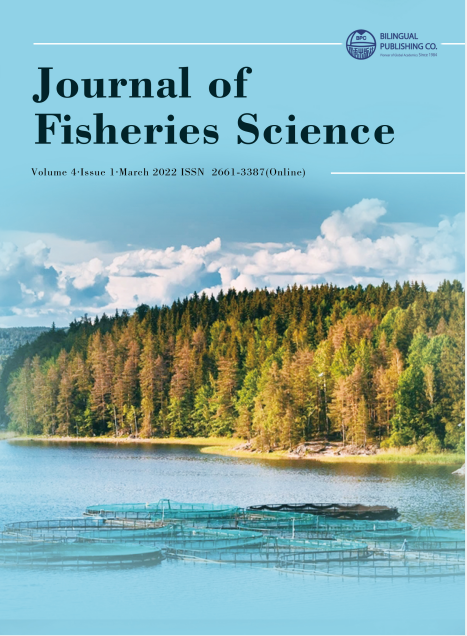Planktonic Scenario of the River Ganga & Yamuna at Prayagraj in COVID-19 Lockdown: A Case Study
DOI:
https://doi.org/10.30564/jfsr.v4i1.4275Abstract
Ganga is the most prestigious river of India. The COVID-19 lockdown may have forced us to stay indoors, but it has been boon for pollution-ridden Ganga and Yamuna. Plankton is tiny organisms drifting with water current, influenced by river physical and chemical factors. During lockdown anthropogenic factors were reduced which affected water and plankton quality. Plankton samples were collected from the upstream of the river Ganga (Shankerghat, latitude 25030’28” N and longitude, 81052’10”E) and Yamuna (near boat club, latitude 25024’29”N and longitude 81054’50”E) at Prayagraj, during national lockdown. In the before lockdown period (2019), total 28 planktonic taxa were recorded from the river Ganga, among them 10 taxa from Bacillariophyceae, 15 from Chlorophyceae and 3 from Myxophyceae. While during LD period total 54 genera with 86 species was recorded (Bacillariophyceae 10 taxa, Chlorophyceae 23 taxa, Myxophyceae 9 taxa, Euglenophyceae 2 taxa, Dianophyceae, 1, Rotiferea 7 taxa, Protozoa 2 taxa). Various species of green algae were observed in this small period of lockdown, some species were not observed since a long, like Pediastrum tetras, Scenedesmus abundans, Ankistrodesmus fusiformis, and Brachionus angularis. Various species of phytoplankton and zooplankton were in reproductive phase because river was flowing silently, without any internal and external disturbance. Ganga was more affected by anthropogenic activity and factory discharge than Yamuna So lack of chemicals in the water and minimum human interference favoured auto rejuvenation of Ganga in terms of plankton quality, diversity and reproduction behaviour. Such type of environmental changes may stimulate for origin of new species and disappear or reappear of various aquatic species.
Keywords:
River Ganga and Yamuna, Plankton, Diversity, COVID-19, Lockdown & PrayagrajReferences
[1] Ministry of Home Affairs, (MHA), 2020. Order: Extension of Lockdown. Order No. 40-3/2020-DMI(A), MHA, Govt. of India. [Accessed 2020 May 12].
[2] Yunus, A.P., Masago, Y., Hijioka, Y,. 2020. COVID-19 and surface water quality: improved lake water quality during lockdown. Sci Total Environ. 731, 139012.
[3] Central Pollution Control Board, (CPCB), 2020. Impact of lockdown on water quality of river Ganga. CPCB, Ministry of Environment, Forest and Climate Change, Govt. of India, New Delhi.
[4] David, T., Clarence, L., 2001. Human-caused environmental change: Impacts on plant diversity and evolution PNAS. 98(10), 5433-5440.
[5] Braga, F., Scarpa, G.M., Brando, V.E., Manfè, G., Zaggia, L., 2020. COVID-19 lockdown measures reveal human impact on water transparency in the Venice Lagoon. Sci Total Environ. 736, 139612.
[6] Sharma, A.K., Malik, D.S., Bargali, H., 2018. Status of plankton diversity in relation to water quality of Bhagirathi riverine system in Garhwal Himalaya. International Journal of Advance Science Research. 3, 30-37.
[7] Carle, F.L., 1979. Environmental monitoring potential of the odonata with a list of rare and endangered anisoptera of Virginia, United States. Odontologia. 8, 319-323.
[8] Amarsinghe, B.P., Viverberg, J., 2002. Primary production in a tropical reservoir in Sri-Lanka. Hydrobiologia. 487, 85-93.
[9] APHA, 2005. Standard methods for the examination of water and wastewater, 21st edn. American Public Health Association.
[10] Welch, P.S., 1952. Limnological Methods. The Blakistan Company, Philadelphia.
[11] Laal, A.K., Karthikeyan, M., 1993. Rotifers pollution or productivity indicators. Current science. 65(11), 77-79.
[12] Abdul, G., Khan, S., Mirza, Z.S., Husain, A., Zafer, N., 2012. Community structure of epiphytic Rotifers of a floodplain. Biologia. 58, 1-12.
[13] Ray, P.S., Singh, S.B., Sehgal, K.L., 1966. A study of some aspects of ecology of the river Ganga and Jamuna at Allahabad in 58-59. Proc. Nat. Acad. Sci Ind.(B). 36(111), 235-272.
[14] Mohan Vishwa, 2020. Cleaner Ganga: CPCB validates improvement in water quality, see bigger change in river stretch in U. P.,TNN April 28. 13, 42 IST.
[15] Tunin-Ley, A., Ibañez, F., Labat, J., Zingone, A., Lemée, R., 2009. Phytoplankton biodiversity and NW Mediterranean Sea warming: Changes in the Dianoflagellates genus Ceratium in the 20th century. Marine Ecology Progress Series. 375, 85-99.
Downloads
Issue
Article Type
License
Copyright and Licensing
The authors shall retain the copyright of their work but allow the Publisher to publish, copy, distribute, and convey the work.
Journal of Fisheries Science publishes accepted manuscripts under Creative Commons Attribution-NonCommercial 4.0 International License (CC BY-NC 4.0). Authors who submit their papers for publication by Journal of Fisheries Science agree to have the CC BY-NC 4.0 license applied to their work, and that anyone is allowed to reuse the article or part of it free of charge for non-commercial use. As long as you follow the license terms and original source is properly cited, anyone may copy, redistribute the material in any medium or format, remix, transform, and build upon the material.
License Policy for Reuse of Third-Party Materials
If a manuscript submitted to the journal contains the materials which are held in copyright by a third-party, authors are responsible for obtaining permissions from the copyright holder to reuse or republish any previously published figures, illustrations, charts, tables, photographs, and text excerpts, etc. When submitting a manuscript, official written proof of permission must be provided and clearly stated in the cover letter.
The editorial office of the journal has the right to reject/retract articles that reuse third-party materials without permission.
Journal Policies on Data Sharing
We encourage authors to share articles published in our journal to other data platforms, but only if it is noted that it has been published in this journal.




 Kalpana Srivastava
Kalpana Srivastava

